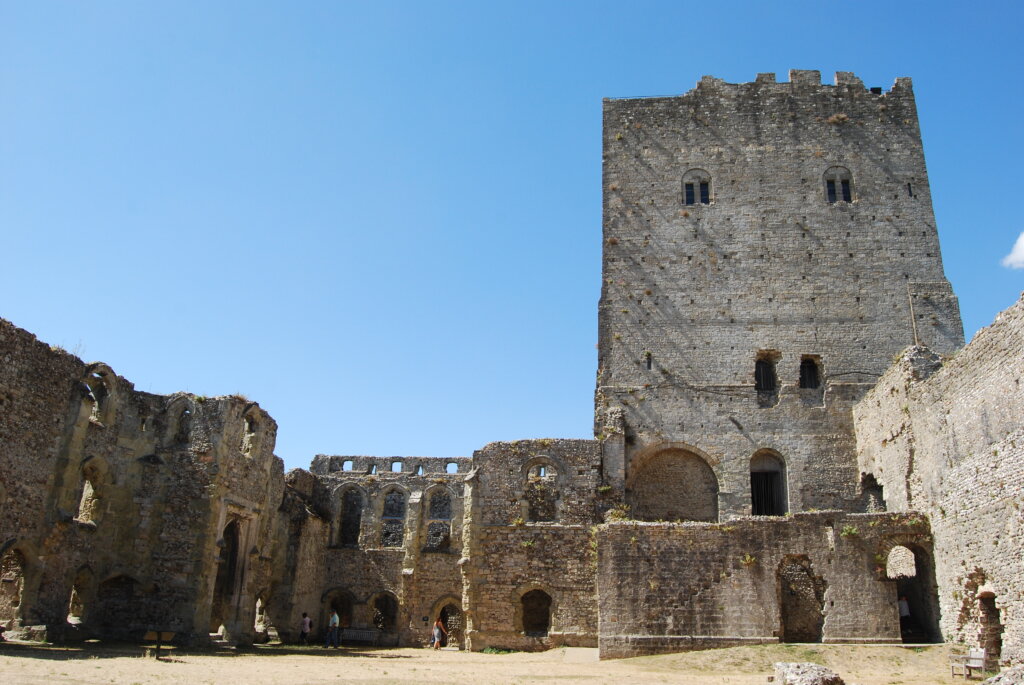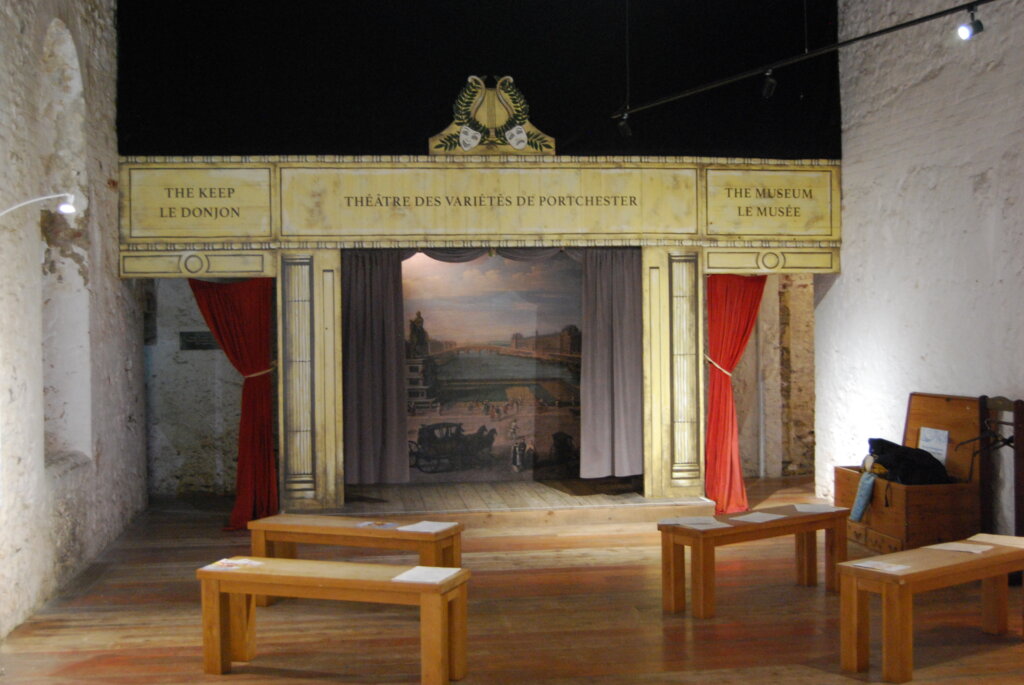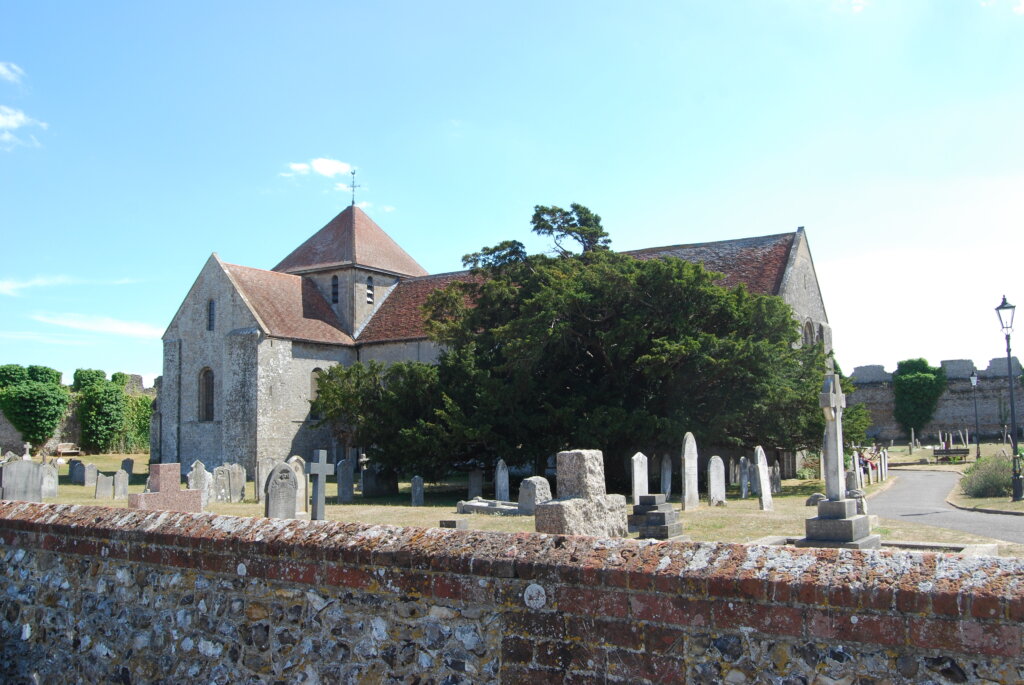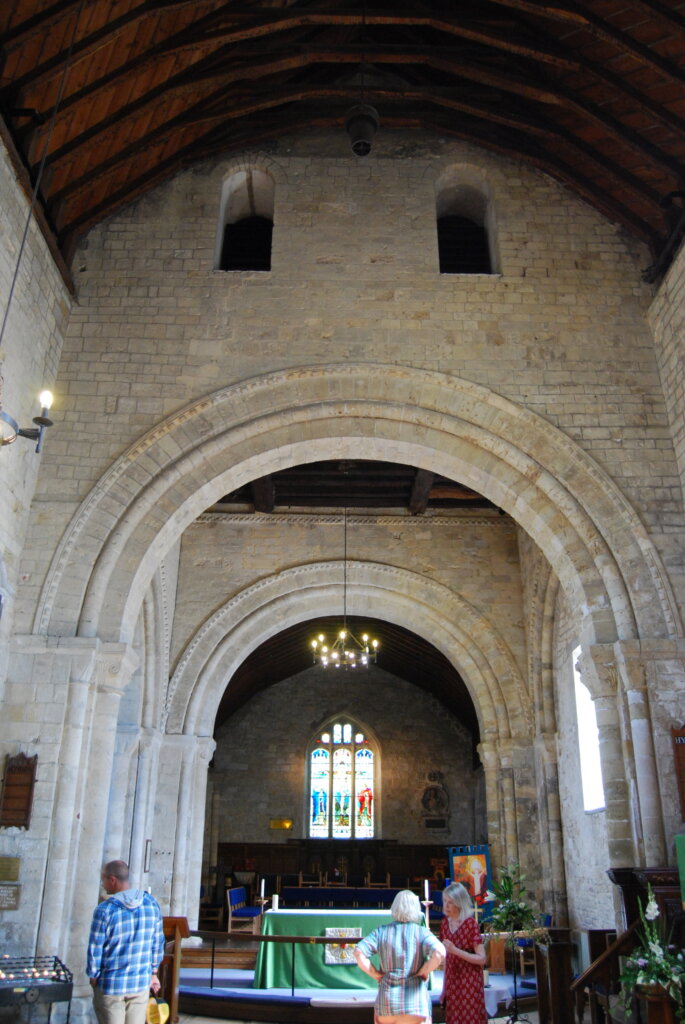
Portchester Castle
I’ve mentioned once or twice lately that I was making (yet another) trip to the Historic Royal Dockyards in Portsmouth. I do love the ships there, though compared with a lot of people on Twitter I am not particularly interested in naval history. This time we made a side trip to Portchester Castle and I’m going to write a short blog on that because it does actually have a Napoleonic Wars link.
The Napoleonic Wars came very late in Portchester Castle’s life. The castle has an unusually long outer wall which is an almost perfect square. This is because that part of the construction is not a mediaeval defence at all – it’s the original walls of a Roman camp built on this site toward the end of the 3rd century. They are in surprisingly good condition so when the Normans decided to build a castle on the site, they simply tucked it into a corner of the old Roman camp.

For hundreds of years the fortunes of Portchester castle waxed and waned, largely according to our relationship with France. Portchester was a good place to gather together an army ready to go and attack the French in bad times and a convenient port of call for visitors from across the channel in good. In 1445 it was the landing place for Henry VI’s French bride, Margaret of Anjou, and it was often used as a royal palace until it was finally sold by Charles I. Since then it has been privately owned, but frequently leased by the crown, often for use as a prison which brings us to the Napoleonic connection.
During the wars with France it was used as a prisoner of war camp. Although it was crowded, it seems to have been (as prisoner of war camps at the time went) not a particularly bad place. Some prisoners were housed in the old keep, but many lived in huts erected inside the Roman walls. The governor seems to have been a reasonably humane man who made provision for keeping up the morale of his prisoners. They had a theatre in the base of the keep. You can see a photo of the restored theatre below.

In 1810 the prisoners included an entire theatrical troupe who had been captured in the Balearics and transferred to Portchester. The prison governor provided them with materials to build a stage, scenery and boxes and they put on professional quality performances. The standard was so high that local civilians used to pay to come and watch them – until the local theatre complained that it was destroying their business. After that only prisoners and the army garrison were allowed to attend. The theatre operated for three years, staging a variety of plays with scripts often sent over from Paris.
The last prisoners of war left the castle in 1814 and it was finally abandoned by the army in 1819. It stood as a ruin until 1926 when it was placed in the guardianship of the state. Since 1984 it has been managed by English Heritage who describe it as “one of the most outstanding surviving coastal fortifications in the country.” It’s an astonishing place to visit but it seems not nearly as well-known as it deserves to be – and I haven’t even mentioned the spectacularly beautiful Norman church within the Roman walls.


If you are in the area, I would really recommend a visit.
